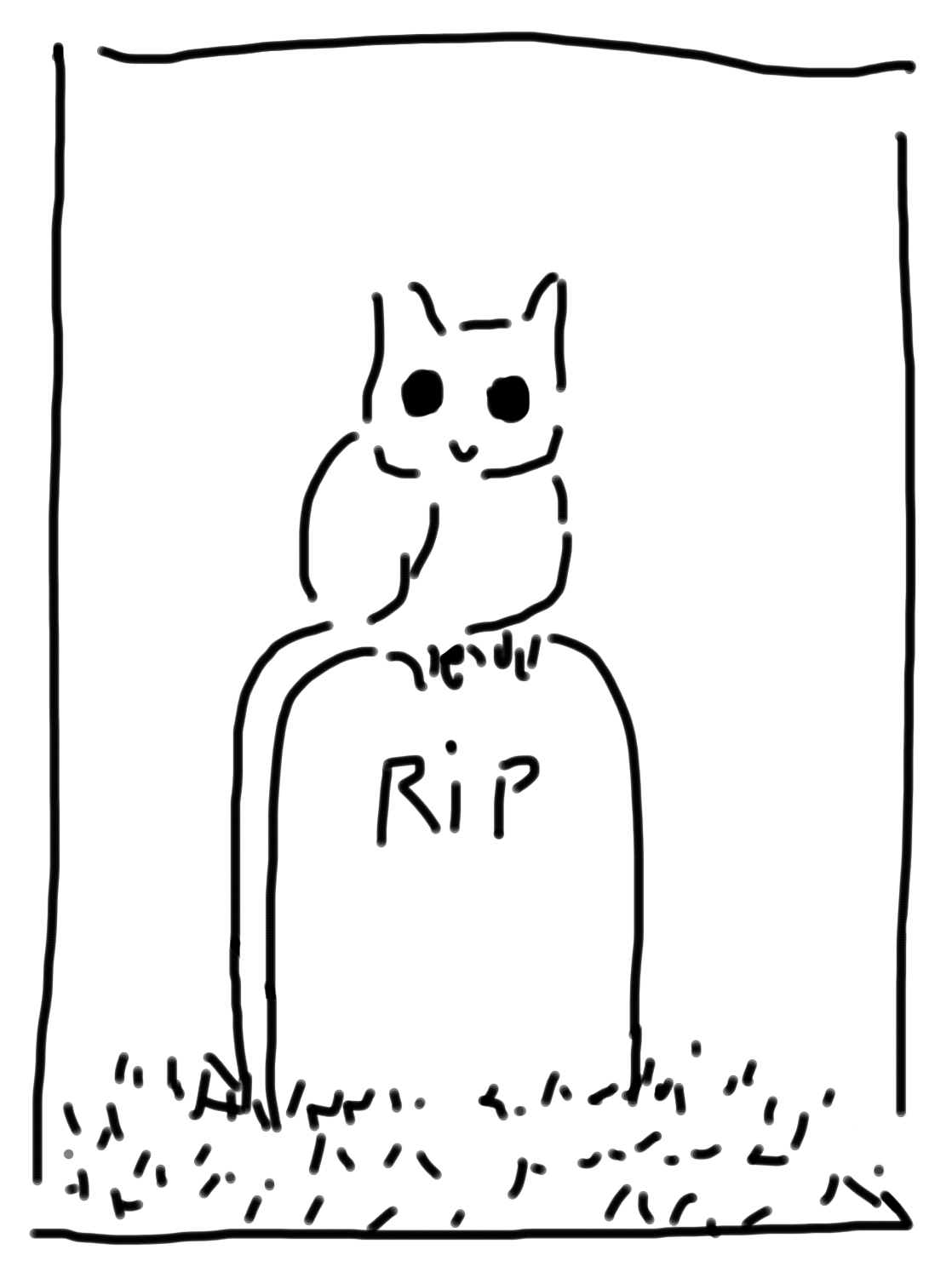ANTES un mundo sin reliquias
BEFORE a world without relics
2017
1 er premio | 1st prize, Consurso Itaú de Artes Visuales 2017/2018, BsAs, Arg.
ES | Libro de Artista / edición de 7 ejemplares numerados y firmados, de 32 páginas c/u (32x23cm), realizados en papel Magnani Velata Avorio de 120gr., con guardas marmoladas realizadas por Ato Menegazzo, encuadernados por Sofía Olischansky, publicados por Galería Atocha. Incluye 10 estampas en aguafuerte/aguatinta, todas fechadas y firmadas en lápiz al dorso, realizadas en papel Magnani Velata Biblos 140gr. de 20x15cm, impreso por Diego Bugallo (Taller La Panaderia), Buenos Aires.
Los textos del libro fueron realizados en colaboración con Andrés Aizicovich.
Los 10 grabados del libro fueron también editados separadamente:
Estampas en aguafuerte/aguatinta / edición de 15 copias c/u, todas fechadas y firmadas en lápiz, realizadas en papel Fabriano Rosaspina de 220gr. (24x34cm), impreso por Diego Bugallo (Taller La Panaderia) y publicadas por Galería Atocha, Buenos Aires.
ENG | Artist’s Book / edition of 7 copies numbered and signed, of 32 pages each (32x23cm), made on Magnani Velata Avorio paper of 120gr., with marbled guards made by Ato Menegazzo, bound by Sofía Olischansky, published by Atocha Gallery. Includes 10 prints in etching / aquatint, all dated and signed in pencil on the back, made in Magnani Velata Byblos 140gr paper. 20x15cm, printed by Diego Bugallo (Taller La Panaderia), Buenos Aires.
The texts of the book were made in collaboration with Andrés Aizicovich.
The 10 engravings of the book are also edited separately:
Prints in etching and aquatint / edition of 15 copies each, all dated and signed in pencil, made in Fabriano Rosaspina paper of 220gr. (24x34cm), printed by Diego Bugallo (Taller La Panaderia) and published by Galería Atocha, Buenos Aires.
Exhibiciones | Exhibitions:
2019 - ANTES, un mundo sin reliquias, Bienal de Performance, BsAs, Arg.
2018 - Originales múltiples, CC Recoleta, BsAs, Arg.
2018 - Premio Jovenes Grabadores 2da edición, Panal 361, BsAs, Arg.
2018 - 1 er premio | 1st prize, Consurso Itaú de Artes Visuales 2017/2018, BsAs, Arg.
2017 - ANTES, un mundo sin reliquias, Galería Atocha - BsAs, Arg.
ES | Antes de la invención de la fotografía se creaban reproducciones de obras de arte de manera manual, con grabados en aguafuerte y aguatinta. Para el proyecto ANTES tomé este atávico método de registro para recrear en grabado muchas obras y episodios del arte argentino de los años 60’ que nunca fueron documentados y de los que solo tenemos sus relatos, siempre ambiguos y cambiantes. ANTES es entonces el primer “documento” en imágenes de estos eventos. Un juego imaginario con los límites de la representación y nuestro imaginario histórico.
ANTES es un libro de artista con un relato ficcional acompañado de diez estampas en aguafuerte/aguatinta, cada una de ellas “registra” obras no documentadas realizadas por los primeros artistas neo-vanguardistas argentinos como: Carta a Romero Brest, Las fuentes rojas, Bonino aclara ciertas dudas, Tumba de Tut Ank Amon, Greco puto, La pelea, Poesía urbana, El piolín y otros eventos artísticos.
ENG | Before the invention of photography, reproductions of works of art were created manually, with engravings in etching and aquatint. For the project ANTES (before) I took this atavistic method of recording to recreate in engraving many works and episodes of the Argentine art of the ‘60s that were never documented and of which we only have their stories, always ambiguous and changing. ANTES is then the first “document” in images of these events. An imaginary game with the limits of representation and our historical imaginary.
ANTES is an artist’s book with a fictional story accompanied by 10 prints in etching/aquatint, each one of them are “records” of undocumented works made by the first Argentine avant-garde artists such as: Carta a Romero Brest, Las fuentes rojas, Bonino Aclara ciertas dudas, La Tumba de TutAnkAmon, Greco puto, La Pelea, Poesía Urbana, Piolín and other artistic events.



ES | Relato introductorio del libro:
Pueden llamarme Ignacio, estamos en confianza. Hace unos años, no importa cuántos, encontrándome sin dinero y sin nada que me importase mucho en esta tierra, se me ocurrió embarcarme en los misterios de la psique humana. Pensaba tal vez encontrar en ella un camino donde retornar, volver a vivir algunos momentos perdidos en la tiniebla de los tiempos.
Necesitaba imperiosamente volver a esos sucesos, lo sentía así cada vez que en mi alma se posaba una estación húmeda y lluviosa. Y entonces es cuando entendía que había llegado la hora de echarme a la mar del pasado, de ingresar en esos territorios oscuros y lejanos, de dejarme llevar por las mareas, estar a la merced de las tormentas, atarme al mástil de la mente para contemplar la bravura de la memoria.
Encontré en la hipnosis un modo certero de acceder y habitar esos reductos del alma humana, tantas veces inaccesibles por la herrumbrada cerradura del tiempo y el olvido. La hipnosis fue mi llave, la más útil herramienta para acceder a esos territorios.
Sin pedir recomendaciones, tomé las páginas amarillas y marque el teléfono del primer PsicoHipnotizador cuyo anuncio atrajo mi atención. Llamé entonces al Doctor Ismael.
Quería que mi sesión de hipnosis fuera completamente documentada, así que convoqué a un escritor taquigráfico y a un dibujante para que registraran en textos y en imágenes lo que de mi boca surgiese mientras estuviera en trance. El consultorio fue acondicionado para la sesión de ese día, no me importó gastar mis ahorros aunque fuera por una única hora de reencuentro con los olores de ese tiempo. Quería volver, solo volver….
La sesión comenzó con un distendido diálogo, rápidamente entramos en confianza:
—Yo era un joven moderno, que salía mucho. —le confesé—. Me embriagaba en los bares de Tres Sargentos en largas noches etílicas. Conocí la Manzana cuando estaba loca. Me emocioné con las revueltas de mayo. Y pensaba que si existía la verdad, ésta estaba seguramente en el arte y en la música.
Ismael me indicó que me descalzara y me sentara en la camilla. Fui guiado por su voz algodonosa. Sentí que mis párpados eran pesados, no podía ya tener los ojos abiertos. Con tono monótono me decía:
—Ponga sus manos entrelazadas, respire hondo y profundamente. Usted está muy relajado. Ahora que se siente relajado, apriete sus manos con fuerza, tanta como pueda. Siente quietud y paz. Recuéstese en la camilla, siente cada latido de su corazón y su respiración se hace cada vez más honda. Todo es oscuridad profunda. Está cayendo suave y ligeramente. Sus pies tocan el suelo, abre los ojos. Mira a su alrededor. Es el año cero. Ignacio, cuénteme lo que ve.
Mis palabras parecían brotar solas:
—Estoy en un tren, estoy llegando a Retiro. Es el anochecer de un día agitado. Tengo veinte años. Llevo en mi morral un libro, un long-play y un cuaderno de notas, poco dinero. Sé que no me hace falta demasiado más. El guarda del tren pide mi boleto con desconfianza, de seguro mi aspecto le llama la atención. Esquivo empleados bancarios y burócratas, los veo grises y con rostros alunados. La ciudad es una selva y busco a mi tribu. Cruzando la Plaza San Martín puedo hallarlos.
Repentinamente mis visiones toman otro matiz; ya no soy ese jóven. Ya no sé quien soy, mi voz ya no es mi voz. Yo soy otros, soy hablado. Me siento perdido y comienzo a rebotar en paredes cavernosas que me resultan ajenas. ¿Quiénes son estas personas? Soy un canal a través del cual otros hablan, los recuerdos de otros se hacen presentes y yo revivo lo que nunca viví. Me pierdo a mí mismo.
De súbito estoy mojado, mi cabeza chorreante se levanta de una bañadera de agua fría e Ismael, el dibujante y el taquígrafo me miran con desconcierto. ¿Dónde estuve? No lo sé, pero el registro de ese viaje quedó en estas nubladas imágenes y estos retazos de relato. Vuelvo a ellos, infatigable, buscando respuestas. Siempre busco respuestas, aunque quizás estas no sean para preguntas que yo me formulé, sino para las que hace algún otro…
EN | Introductory story of the book:
Call me Ignacio, we are in confidence. A few years ago, no matter how many, finding myself without money and with nothing that mattered much to me on this earth, it occurred to me to embark on the mysteries of the human psyche. I thought perhaps I would find in it a way to return, to relive some moments lost in the darkness of time.
I urgently needed to return to those events, I felt it that way every time a humid and rainy season settled on my soul. And that's when I understood that the time had come to throw myself into the sea of the past, to enter those dark and distant territories, to let myself be carried away by the tides, to be at the mercy of the storms, to tie myself to the mast of the mind to contemplate the bravery waves of memory.
I found in hypnosis an accurate way to access and inhabit those redoubts of the human soul, so often inaccessible by the rusty lock of time and oblivion. Hypnosis was my key, the most useful tool to access those territories.
Without asking for recommendations, I took to the
telephone guide and dialed the phone number of the first PsychoHypnotist whose ad caught my attention. I then called Doctor Ismael.
I wanted my hypnosis session to be completely documented, so I hired a shorthand writer and a illustrator to record in text and images what came out of my mouth while I was in trance. The office was set up for that day's session, I didn't mind spending my savings even if it was just for a single hour of reunion with the smells of that time. I wanted to go back, just go back….
The session began with a relaxed dialogue, we quickly gained trust:
—I was a modern young man, who went out a lot. —I confessed—. I got drunk in the bars of Tres Sargentos on long drunken nights. I knew the street block when it was crazy. I was excited by the May riots. And I thought that if truth existed, it was surely in art and music.
Ismael told me to take off my shoes and sit on the stretcher. I was guided by his cottony voice. I felt like my eyelids were heavy, I couldn't keep my eyes open anymore. In a monotonous tone he told me:
—Put your hands together, breathe deeply and deeply. You are very relaxed. Now that you feel relaxed, squeeze your hands as tightly as you can. Feel stillness and peace. Lie down on the stretcher, feel every beat of your heart and your breathing becomes deeper and deeper. Everything is deep darkness. It is falling softly and lightly. His feet touch the ground, he opens his eyes. Look around. It's year zero. Ignacio, tell me what you see.
My words seemed to come out by themselves:
—I'm on a train, I'm arriving at Retiro. It is a hard day's night. Am twenty years old. I carry a book, a LP and a notebook in my backpack, not much money. I know I don't need too much more. The train guard asks for my ticket with suspicion, surely my appearance catches his attention. I avoid bank employees and bureaucrats, I see them gray and with moon-like faces. The city is a jungle and I am looking for my tribe. Crossing Plaza San Martín I can find them.
Suddenly my visions take on another nuance; I'm not that young man anymore. I no longer know who I am, my voice is no longer my voice. I am others, I am spoken. I feel lost and begin to bounce off cavernous walls that seem foreign to me. Who are these people? I am a channel through which others speak, the memories of others are present and I relive what I never experienced. I lose myself.
All of a sudden I am wet, my dripping head rises from a bathtub of cold water and Ismael, the draftsman and the stenographer look at me with bewilderment. Where was I? I don't know, but the record of that trip remained in these cloudy images and these fragments of story. I return to them, tireless, searching for answers. I always look for answers, although perhaps these are not for questions that I asked myself, but for those asked by someone else...


Esta estampa “documenta” la acción: Greco Puto de Alberto Greco, Buenos Aires y París a partir de mediados de los 50’ aprox.
Se dice que el artista recorrió los baños de los bares de París y Buenos Aires escribiendo “Greco puto” en las paredes.
Este texto aparece en el libro al costado de esta estampa:
Mientras habité este plano hice muchas cosas, ¡tantas cosas!, algunas creo que ya ni recuerdo. En un momento fui monja, oriné sobre pinturas, sufrí por amor... yo, en un tiempo ya lejano, fui Alberto. En ese tiempo pensaba mucho en mi apellido, que también fue el seudónimo de algún otro artista. En la génesis de mi firma yo fui quien escribió su propio apellido en todos los baños y debajo de mi apellido fui quien escribió la palabra Puto. También recuerdo escribir la palabra FIN en mi palma, eso fue lo último, no necesité escribir nada más. Ahora ya no tengo ni apellido, ni forma, ni aliento. Y todas aquellas preocupaciones de los vivos me resultan tiernamente ingenuas.
ENG | Greco Faggot
This print “documents” the Greco Faggot action of Alberto Greco, Buenos Aires and Paris in the mid-50s approximately.
It is said that the artist toured the bathrooms of the bars of Paris and Buenos Aires writing “Greco puto” (Greco faggot) on the walls.
This text appears in the book on the side of this engraving:
While I inhabited this plane I did many things, so many things! Some of them I do not even remember anymore. In a moment I was a nun, I urinated on paintings, I suffered for love ... I, in a distant time, was Alberto. At that time I thought a lot about my surname, which was also the pseudonym of some other artist. In the genesis of my signature I was the one who wrote his own surname in all the bathrooms and under my surname I wrote the word Puto. I also remember to write the word FIN (END) on my palm, that was the last thing, I did not need to write anything else. Now I have no last name, no shape, no breath. And all those worries of the living are tenderly naive to me now.
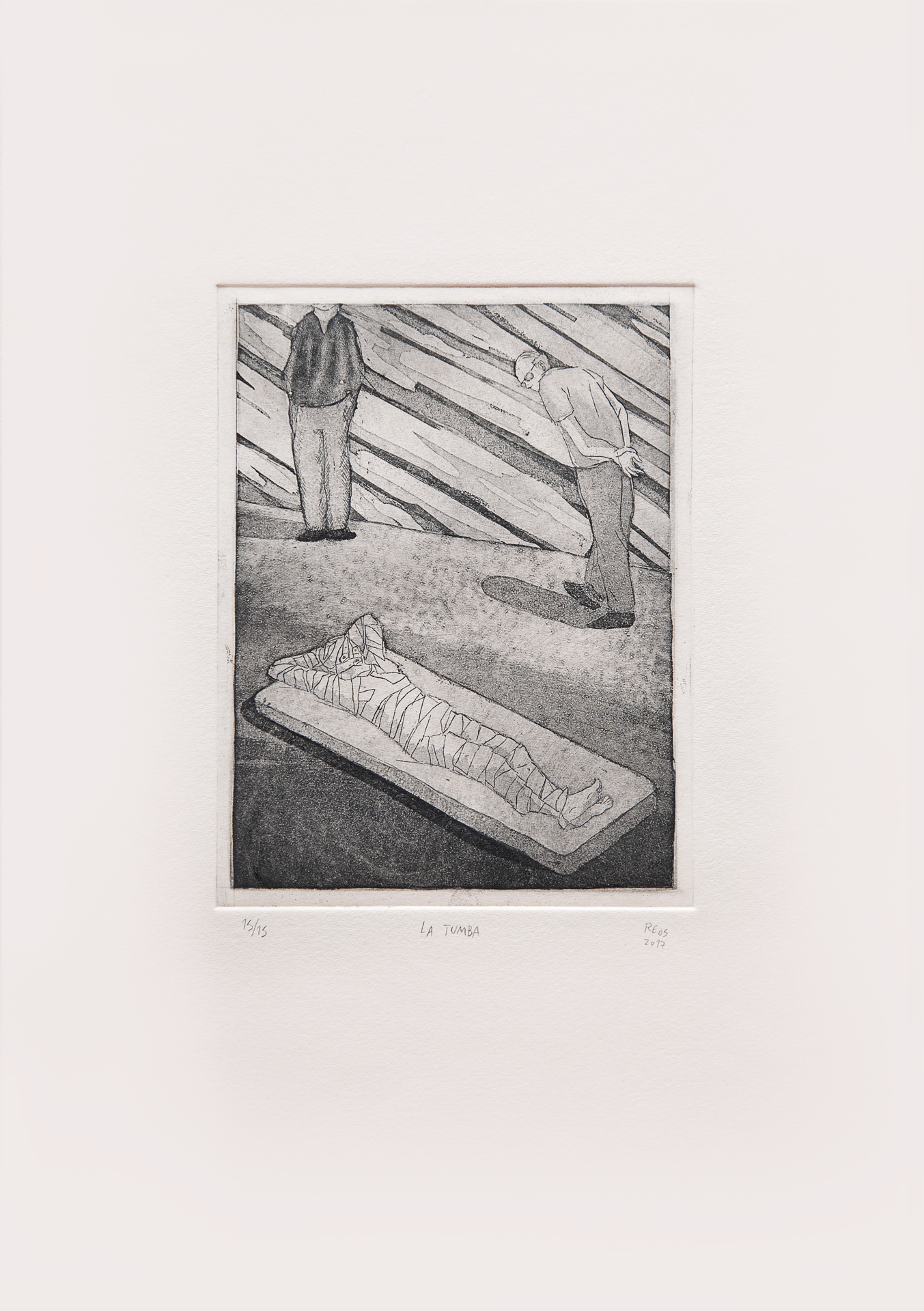

Esta estampa “documenta” la obra: Tumba de Tut Ank Amon de Federico Manuel Peralta Ramos, Buenos Aires, 1976.
Para la exhibición “Creencias y supersticiones de siempre, Berni-Peralta Ramos” el artista empapeló de dorado una habitación e instaló un colchón con un performer vestido de momia que hablaba con los espectadores.
Este texto aparece en el libro al costado de esta estampa:
Todo fue porque una noche soñaste, y al despertar recordaste ese sueño. Y lo recordabas a la perfección. En el sueño caminabas temeroso, temblequeabas. Era de noche, no había luna, no se veía el cielo. El suelo era inestable, como hecho de una arena pegajosa. En un momento, cruzaste ese umbral que se apareció casi repentinamente ante tus ojos que se esforzaban por ver algo. Atravesaste ese umbral. Y ahí, en una habitación toda dorada, como dentro de un ovni, encontraste una momia. Solemne, o quizás no tanto. Se quedó allí recostada y se pasó el resto de tu sueño contándote chistes sin gracia y anécdotas que no llevaban a ninguna parte.
ENG | The Tomb
This print “documents” the work: Tomb of Tut Ank Amon by Federico Manuel Peralta Ramos, Buenos Aires, 1976.
For the exhibition “Beliefs and Superstitions of Always, Berni-Peralta Ramos” the artist wallpapered a room in gold and installed a mattress with a performer dressed as a mummy who spoke to the spectators.
This text appears in the book on the side of this engraving:
It was all because one night you dreamed, and when you woke up you remembered that dream. And you remembered it perfectly. In the dream you walked fearfully, you trembled. It was night, there was no moon, you couldn't see the sky. The ground was unstable, as if made of sticky sand. In a moment, you crossed that threshold that appeared almost suddenly before your eyes that were straining to see something. You crossed that threshold. And there, in a room all golden, like inside a UFO, you found a mummy. Solemn, or maybe not so solemn. She lay there and spent the rest of your sleep telling you unfunny jokes and anecdotes that went nowhere.

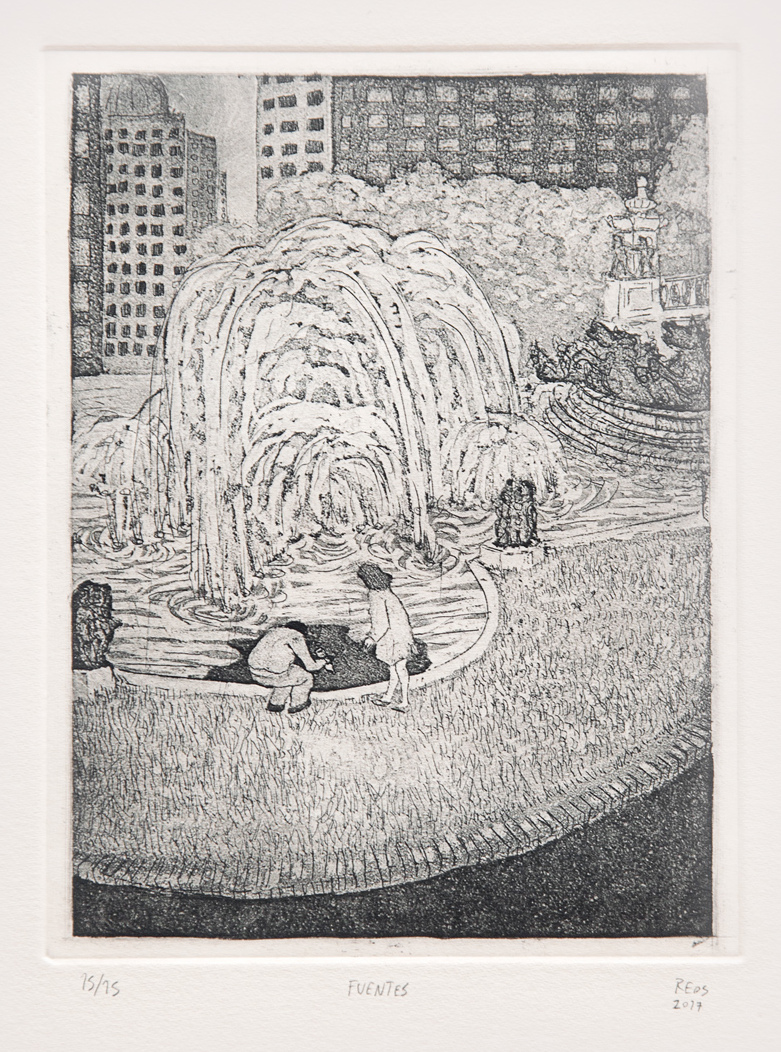
Esta estampa “documenta” la acción: Las fuentes Rojas de Beatriz Balvé, León Ferrari, Roberto Jacoby, Margarita Paksa, Juan Pablo Renzi, Pablo Suárez y otros, Buenos Aires, 1968.
Luego del aniversario de la muerte de Ernesto Guevara los artistas quisieron realizar una obra en su homenaje tiñendo el agua de las fuentes de algunas plazas de la ciudad de rojo. La acción no pudo concretarse con éxito ya que el agua de las fuentes se recambiaba impidiendo ser teñidas.
Este texto aparece en el libro al costado de esta estampa:
(Suena un teléfono, ella atiende): — ¿Hola?, ¿Si? (Voz del otro lado inaudible) — Sí claro, voy a estar lista, tal cual acordamos. —(Voz del otro lado inaudible)— Perfecto, en El Molino me parece bien, a las seis. —(Voz del otro lado inaudible)— Yo ya sé, sos vos quien tiene que fijarse la ropa que se pone, si siempre andas medio hippie, pensá... tiene que ser discreto. —(Voz del otro lado inaudible)— Obvio, el colorante lo tengo listo. —(Voz del otro lado inaudible)— ¡Jaja! no, no es la tintura que uso para el pelo, ¡yo no me tiño!. —(Voz del otro lado inaudible)— Vos traé el embudo, no te olvides. (Ella cuelga el teléfono)
ENG | Fountains
This print “documents” the action: Las Fuentes Rojas by Beatriz Balvé, León Ferrari, Roberto Jacoby, Margarita Paksa, Juan Pablo Renzi, Pablo Suárez and others, Buenos Aires, 1968.
After the anniversary of Ernesto Guevara's death, the artists wanted to make a work in tribute to him by dyeing in red the water in the fountains in some squares of the city. The action could not be carried out successfully since the water in the fountains renwed, preventing them from being dyed.
This text appears in the book on the side of this engraving:
(A phone rings, she answers): - Hello? Yes? (Voice on the other side inaudible) — Yes, of course, I'll be ready, just as we agreed. —(Voice on the other side inaudible)— Perfect, El Molino seems fine to me, at six. —(Voice on the other side inaudible)— I already know, you are the one who has to pay attention to the clothes you wear, if you are always half a hippie, think... it has to be discreet. —(Voice on the other side inaudible)— Obviously, I have the dye ready. —(Voice on the other side inaudible)— Haha! No, it's not the dye I use for my hair, I don't dye it! —(Voice on the other side inaudible)— You bring the funnel, don't forget. (She hangs up the phone)


Esta estampa “documenta” la acción de Margarita Paksa, Roberto Plate, Grupo, Pablo Suárez, Roberto Jacoby, Ricardo Carreira, y otros en el Premio Braque, Buenos Aires, 1968.
Varios artistas invitados a participar del Premio Braque de 1968 se negaron ya que consideraban que sus obras estaban siendo censuradas. Durante la apertura realizaron un escándalo interrumpiendo el evento y tirando papeles con consignas políticas
Este texto aparece en el libro al costado de esta estampa:
Estamos podridos: de que se nos pretenda seducir con desechos arrojados por un gobierno fascista; de las caretas engalanadas, con que se cubre el imperialismo para infiltrarse en nuestra cultura; de soportar un arte dirigido por los mamarrachos teóricos, mercenarios de la burguesía, que solo existen en función de fuerzas represivas; de ustedes, señoras y señores que son las tropas de choque de un sistema decadente y pervertido.
ENG | Revolt
This print “documents” the action by Margarita Paksa, Roberto Plate, Grupo, Pablo Suárez, Roberto Jacoby, Ricardo Carreira, and others at the Braque Prize, Buenos Aires, 1968.
Several artists invited to participate in the 1968 Braque Prize refused since they considered that their works were being censored. During the opening they made a scandal by interrupting the event and throwing papers with political slogans
This text appears in the book on the side of this engraving:
Estamos tan cansados: que nos intenten seducir con despilfarros que tira un gobierno fascista; de las máscaras decoradas con las que se cubre el imperialismo para infiltrarse en nuestra cultura; de apoyar un arte dirigido por idiotas teóricos, mercenarios de la burguesía, que sólo existen en función de fuerzas represivas; de ustedes, señoras y señores, que son las tropas de choque de un sistema decadente y pervertido.
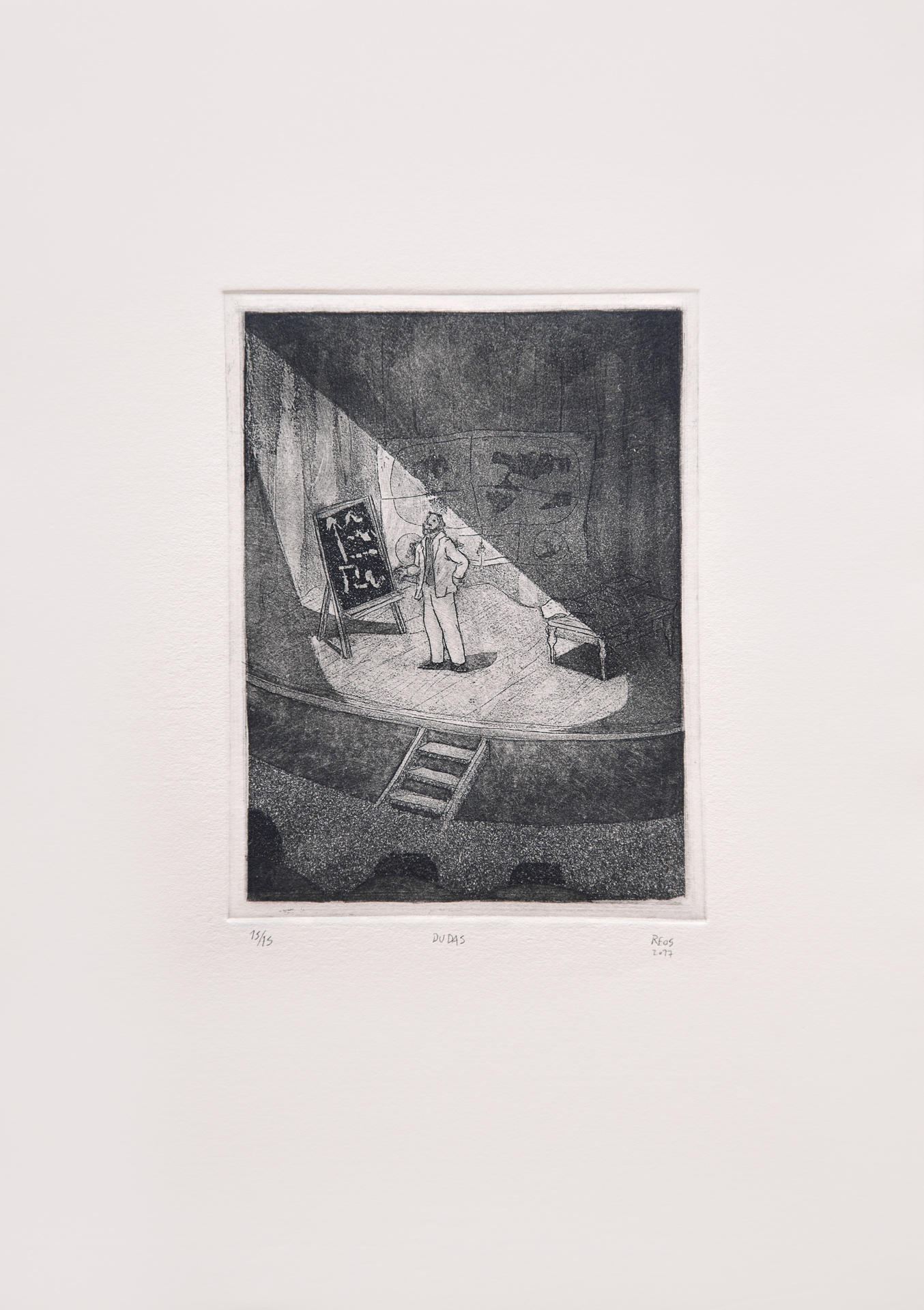

Esta estampa “documenta” la obra: Bonino Aclara Ciertas Dudas de Jorge Bonino, Córdoba, Argentina, 1965.
El artista dictó un clase en un idioma incomprensible inventado por él. Al finalizar la clase repartía diplomas a los asistentes.
Este texto aparece en el libro al costado de esta estampa:
Clarisuficcion da clormatina, deriente ensilar, romparito da los quesamirutan coktas di rutka. ¡Pramoinus!, ¡Paramoinuminus! Romu sa de trase fra si di quiza. La verdadera salimanu di que escluta. Hurmani justino, guar di qui se nusca. Falana ¡falananisme!, ¡egsacsecmon!
ENG | Doubts
This print “documents” the work: Bonino Clarifies Certain Doubts by Jorge Bonino, Córdoba, Argentina, 1965.
The artist gave a class in an incomprehensible language invented by him. At the end of the class he distributed diplomas to the attendees.
This text appears in the book on the side of this engraving:
Clarisuficcion da clormatina, deriente ensilar, romparito da los quesamirutan coktas di rutka. ¡Pramoinus!, ¡Paramoinuminus! Romu sa de trase fra si di quiza. La verdadera salimanu di que escluta. Hurmani justino, guar di qui se nusca. Falana ¡falananisme!, ¡egsacsecmon!
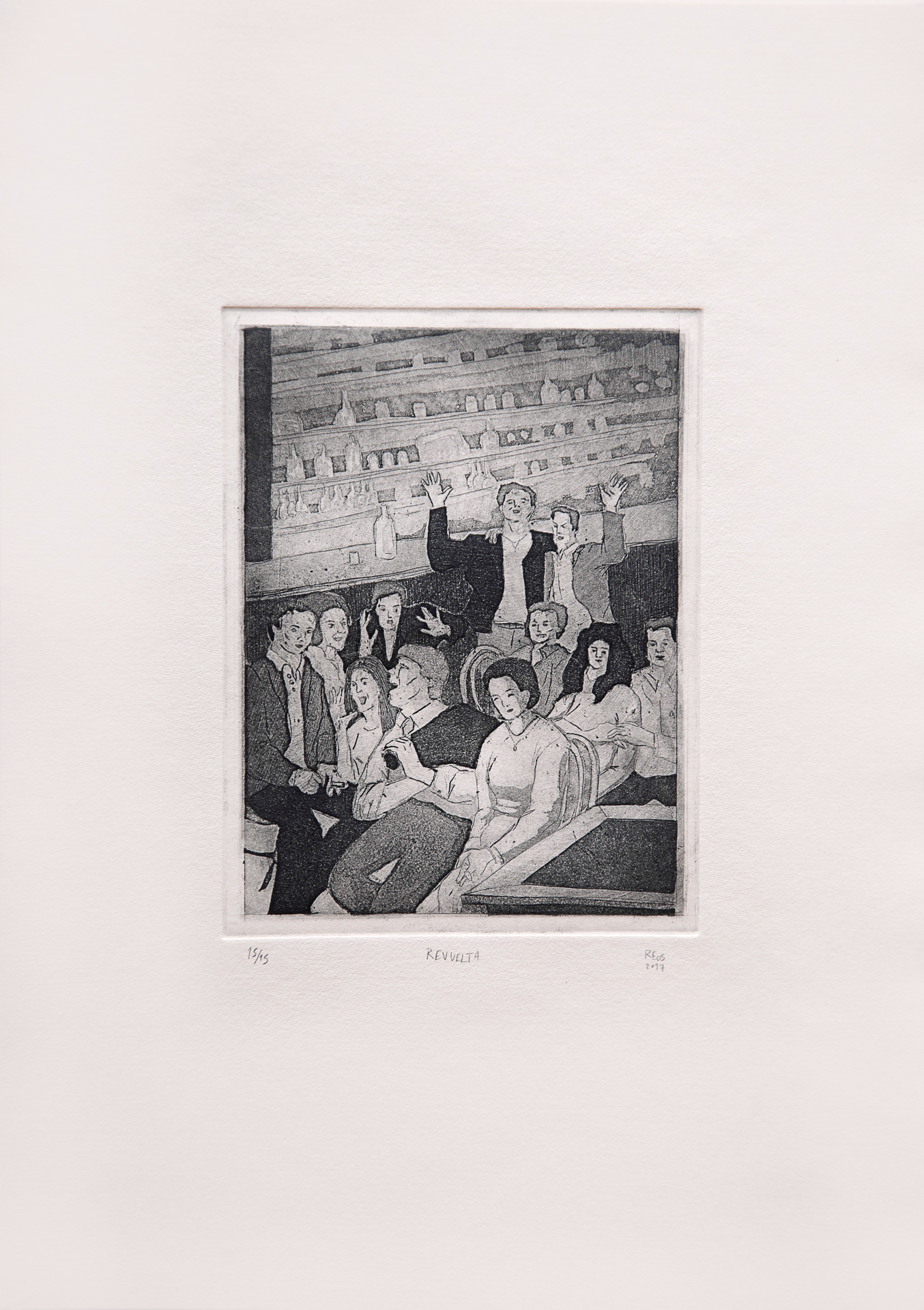

ES | Tertulia
Esta estampa “documenta”: Las tertulias en el Bar Moderno con artistas e intelectuales locales, Buenos Aires, 1967.
El Bar Moderno fue un emblemático punto de encuentro y tertulias para los artistas e intelectuales de la década de los sesenta.
Este texto aparece en el libro al costado de esta estampa:
Borges estaba a sesenta metros, por acá… Maipú al 900. Igual no se por qué te interesa tanto, no pasaba nada que ahora no pase, hacíamos cosas muy parecidas a las de los pibes de ahora… quizá pedíamos un solo café en una mesa con siete personas y nos quedábamos toda la noche, esas cosas, viste. Es difícil ahora saber exactamente cuál era la ubicación que tenía. La zona cambió mucho, como si sobre la ciudad que fue en ese tiempo se hubiera construido otra, y encima otra más, casi sin darnos cuenta se superponen las ciudades. Como capas de maquillaje, vivimos en una ciudad hojaldrada. Los recuerdos son frágiles, podría ser cualquiera de esta cuadra. Pero… mirá ¡allá! creo que esa peluquería… ¡sí! Ahí era… creo. Da lo mismo pibe, yo no soy nostálgico, antes del bar quizás había allí alguna familia, y antes quizás se carneó alguna vaca sobre el barro, y antes quizás unas hermosas tolderías, y antes…
ENG | Gathering
This print “documents”: The gatherings at Bar Moderno with local artists and intellectuals, Buenos Aires, 1967.
The Modern Bar was an emblematic meeting and gathering point for artists and intellectuals of the 1960s.
This text appears in the book on the side of this engraving:
Borges was sixty meters away, here... Maipú at 900. Maybe I don't know why you are so interested, nothing happened that doesn't happen now, we did things very similar to those of the kids today... maybe we ordered a single coffee at a table with seven people and we stayed all night, those things, you see. It is difficult now to know exactly what location it had. The area changed a lot, as if another had been built on top of the city that was at that time, and on top of that another one, almost without realizing it, the cities overlapped. Like layers of makeup, we live in a flaky city. Memories are fragile, it could be anyone on this block. But… look there! I think that hair salon…yes! That's where it was... I think. It doesn't matter kid, I'm not nostalgic, before the bar maybe there was a family there, and before that maybe a cow was butchered in the mud, and before that maybe there were some beautiful tents, and before...


Esta estampa “documenta” la obra: Piolín de Ricardo Carreira, Buenos Aires, 1966.
Obra presentada para la edición 1966 del premio Ver y Estimar. Un piolín cruzaba la sala de exhibición hasta un cubículo donde en un precario taburete se exhibía el mismo piolín, fotocopias del piolín en negativo y otras fotocopias diseminadas por el espacio.
Este texto aparece en el libro al costado de esta estampa:
Si le preguntaras, él no sabría explicar por qué terminó allí. La verdad es que un amigo en su insistencia lo convenció. De otro modo estaría como siempre, en su casa haciendo la cena y escuchando la radio. Pero aquella noche fue distinta, fue en ese salón que la vio. Estaba parada allí, en la otra punta del espacio, tan cerca y a la vez tan inaccesible. Zapatos de plataforma, pelo rojo y encendido. ¡Qué moderna! pensó. Cuando quiso acercarse, evitando chocar con el tumulto de personas y objetos extraños, un hilo blanco le cortó el paso. Era una metáfora perfecta, la distancia entre su mundo y el suyo. Nunca volvió a verla, nunca pudo olvidarla.
ENG | Tweety
This print “documents” the work: Tweety by Ricardo Carreira, Buenos Aires, 1966.
Work presented for the 1966 edition of the Ver y Estimar award. A tweeter crossed the exhibition room to a cubicle where a precarious bench displayed the tweeter itself, negative photocopies of the tweeter, and other photocopies scattered throughout the space.
This text appears in the book on the side of this engraving:
If you asked him, he couldn't explain why he ended up there. The truth is that a friend at his insistence convinced him. Otherwise he would be like always, at his house making dinner and listening to the radio. But that night was different, it was in that room that he saw her. She was standing there, on the other side of space, so close and yet so inaccessible. Platform shoes, fiery red hair. So modern! he thought. When he wanted to get closer, avoiding colliding with the tumult of people and strange objects, a white thread in the middel of the room stopped him off. It was a perfect metaphor, the distance between his world and hers. He never saw her again, he could never forget her.
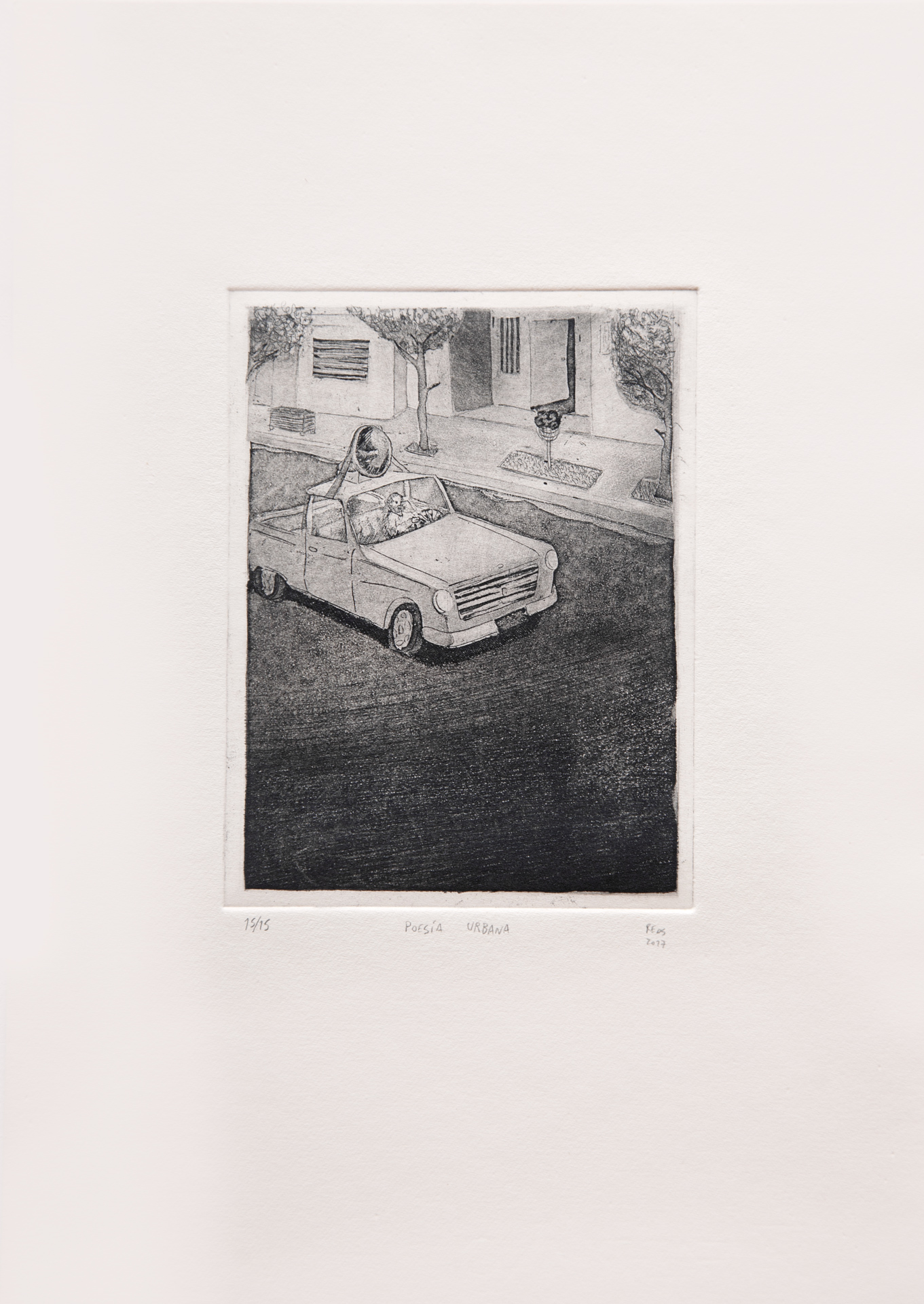

Esta estampa “documenta” la obra: Poesía Urbana de Víctor Andrea, Buenos Aires, 1965.
Testigos afirman que el artista recorrió las calles de su barrio y alrededores en una camioneta con megáfono leyendo poemas propios y de otros autores.
Este texto aparece en el libro al costado de esta estampa:
Nacido en 1933, en Pergamino, Argentina, su trabajo se desarrolló principalmente en espacios/no espacios donde cualquier persona puede hacer cualquier cosa en cualquier momento. Con su obra desafió los binarios que continuamente reconstruimos entre el Sí mismo y el Otro, entre nuestro propio “caníbal” y el yo “civilizado”.
V.A. fue un artista que buscó deliberadamente ser olvidado, y ese fue su gesto vanguardista. Crítico de la idea de autor y de la idea de anonimato. Su más célebre obra, la menos recordada, esos poemas que leía aleatoriamente desde una camioneta, es un significativo ejemplo de su pertinente poética sobre el estado de la situación contemporánea.
ENG | Urban Poetry
This print “documents” the work: Urban Poetry by Víctor Andrea, Buenos Aires, 1965.
Witnesses claim that the artist toured the streets of the neighborhood and surrounding areas in a van with a megaphone reading his own poems and of other authors.
This text appears in the book on the side of this engraving:
Born in 1933, in Pergamino, Argentina, his work was developed mainly in spaces/non-spaces where anyone can do anything at any time. With his work he challenged the binaries we continually reconstruct between the Self and the Other, between our “cannibal” self and the “civilized” self.
V.A. was an artist who deliberately sought to be forgotten, and that was his avant-garde gesture. He is critical of the idea of the author and the idea of anonymity. His most famous work, the least remembered, those poems that he read randomly from a van, are a significant example of his pertinent poetics on the state of the contemporary situation.
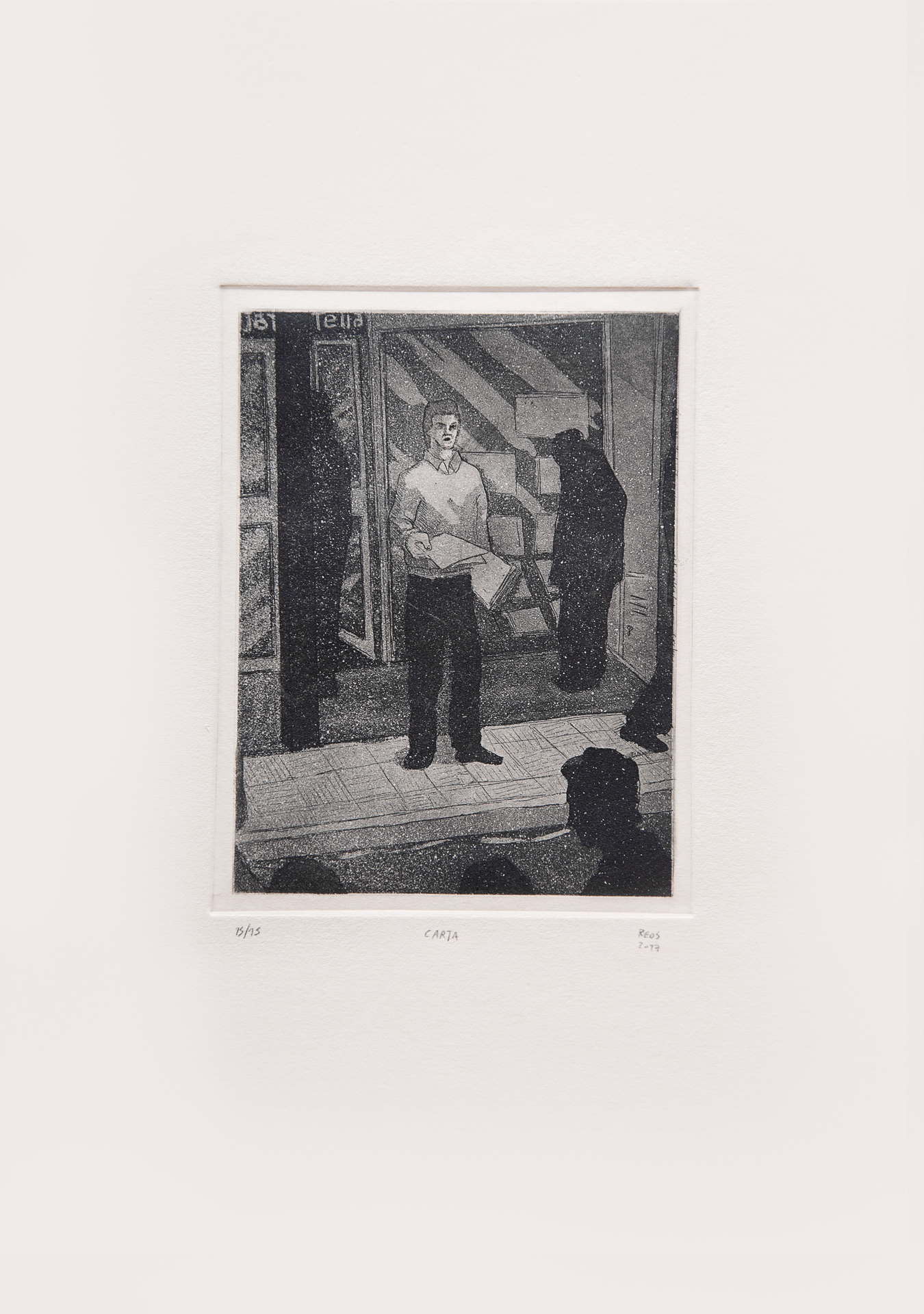

Esta estampa “documenta” la acción: Carta a Jorge Romero Brest de Pablo Suárez, Buenos Aires, 1968.
El artista fue invitado a la exhibición “Experiencias 1968” en el Instituto Di Tella. Su obra consistió en repartir en las cercanías del instituto su carta de renuncia a participar de la muestra.
Este texto aparece en el libro al costado de esta estampa:
Yo trabajé ahí de portero, se veía de todo en esos días. Antes de que él llegara, era como si se pudiese presentir, o mejor dicho… en realidad lo veías a lo lejos, era literalmente una nube de tormenta que se acercaba entre la multitud de paseantes. Una locomotora, siempre largando humo. Estuvo yendo algunos días a repartir esos papeles. Recuerdo que era el mes de mayo, un mes raro, más raro que de costumbre, Racing casi sale campeón. Y aunque él me ofreció sus papeles, nunca agarré ninguno. Al final del día levantaba los que quedaban en el suelo abandonados, alguien siempre limpia el desorden que deja otro, ¿no?
ENG | Letter
This print “documents” the action: Letter to Jorge Romero Brest from Pablo Suárez, Buenos Aires, 1968.
The artist was invited to the exhibition “Experiencias 1968” at the Di Tella Institute. His work consisted of distributing his letter of resignation from participating in the exhibition near the institute.
This text appears in the book on the side of this engraving:
I worked there as a doorman, you could see anything in those days. Before he arrived, it was as if you could sense it, or rather... you actually saw it in the distance, it was literally a storm cloud approaching among the crowd of walkers. A locomotive, always letting out smoke. He came for a few days to distribute those papers. I remember it was the month of May, a strange month, stranger than usual, Racing almost won. And although he offered me his papers, I never took any. At the end of the day I would pick up the rests left abandoned on the floor, someone always cleans up the mess someone else leaves behind, right?


Esta estampa “documenta” la obra: La Pelea de Rodolfo Elizalde y Emilio Ghilioni, Rosario, 1968.
Para el “Ciclo de Arte Experimental” de Rosario los artistas simularon una pelea en la vía pública. Al finalizar lanzaron volantes explicando la acción.
Este texto aparece en el libro al costado de esta estampa:
Ciudad de Rosario. Dos sujetos masculinos, de altura promedio y complexión física promedio, fueron detenidos por averiguación de antecedentes, por alterar el orden y generar disturbios en la vía pública. Déjese constancia de que entre sus efectos personales se encontraron dos libros de sospechosa cubierta roja y cuadernos llenos de anotaciones poco claras que fueron secuestrados y serán estudiados por los correspondientes peritos. Fírmese y archívese.
ENG | Fight
This print “documents” the work: The Fight by Rodolfo Elizalde and Emilio Ghilioni, Rosario, 1968.
For the “Experimental Art Cycle” in Rosario, the artists simulated a fight on public roads. At the end they released flyers explaining the action.
This text appears in the book on the side of this engraving:
City of Rosario. Two male subjects, of average height and average physical build, were arrested for background checks, for disturbing the order and causing disturbances on public roads. Let it be noted that among his personal effects were found two books with a suspicious red cover and notebooks full of unclear notes that were seized and will be studied by the corresponding experts. Sign and file.
ES |
Encuentro de dialogo en el marco de la muestra
ANTES, un mundo sin reliquias, Galería Atocha,
Agosto de 2017.
En el marco de la muestra Ana Longoni, Roberto Jacoby, Lucas Rubinich, Santiago Villanueva, Andrés Aizicovich y Juan Reos converzaron sobre el arte en los 60s.
ENG | Dialogue meeting for the exhibition ANTES, un mundo sin reliquias, Galería Atocha, August 2017.
For the exhibition Ana Longoni, Roberto Jacoby, Lucas Rubinich, Santiago Villanueva, Andrés Aizicovich and Juan Reos held a discussion about art in the 60s.
ANTES, un mundo sin reliquias, Galería Atocha - BsAs, Arg, 2017
![]()
![]()
![]()
![]()
![]()
![]()
![]()
![]()
![]()

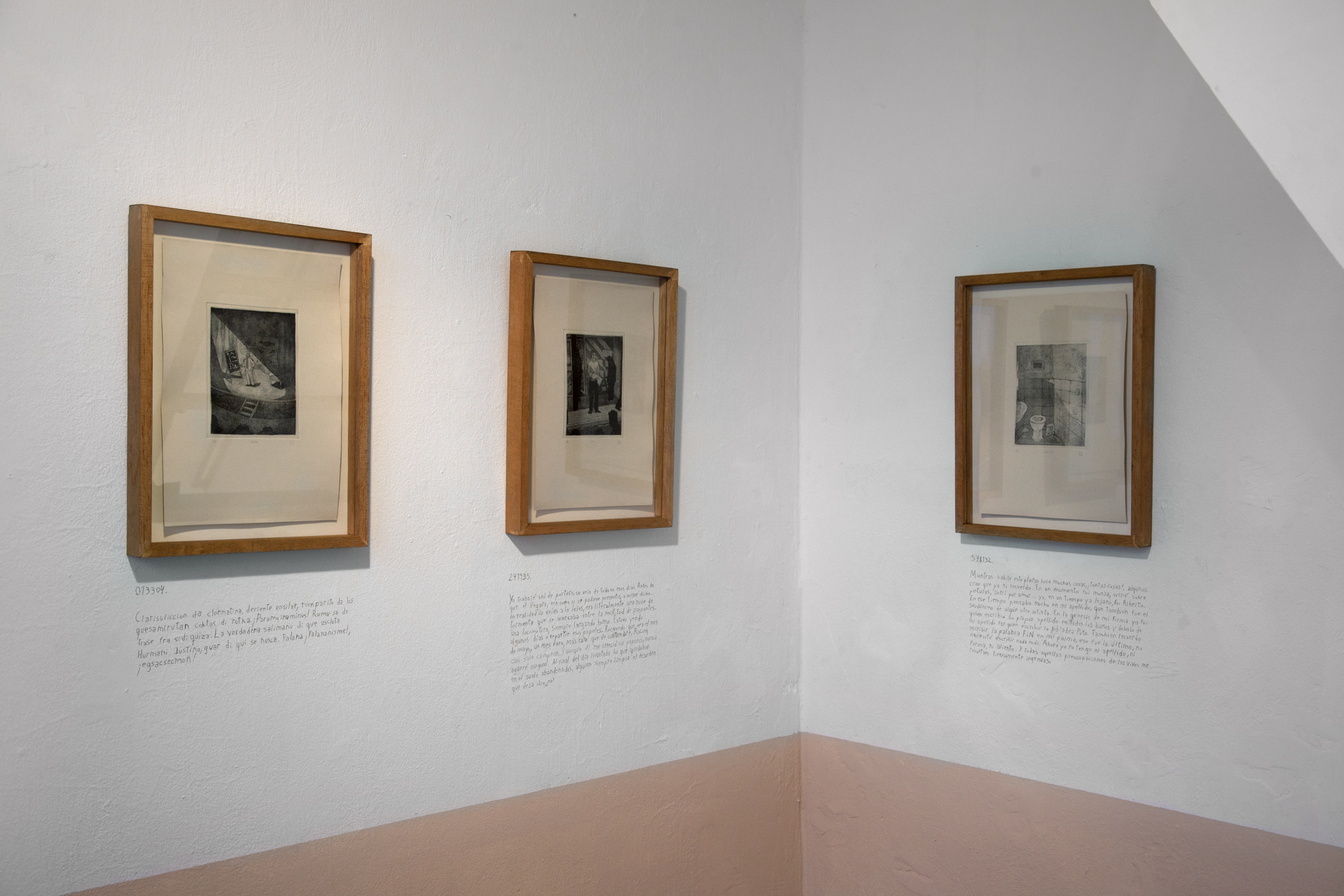

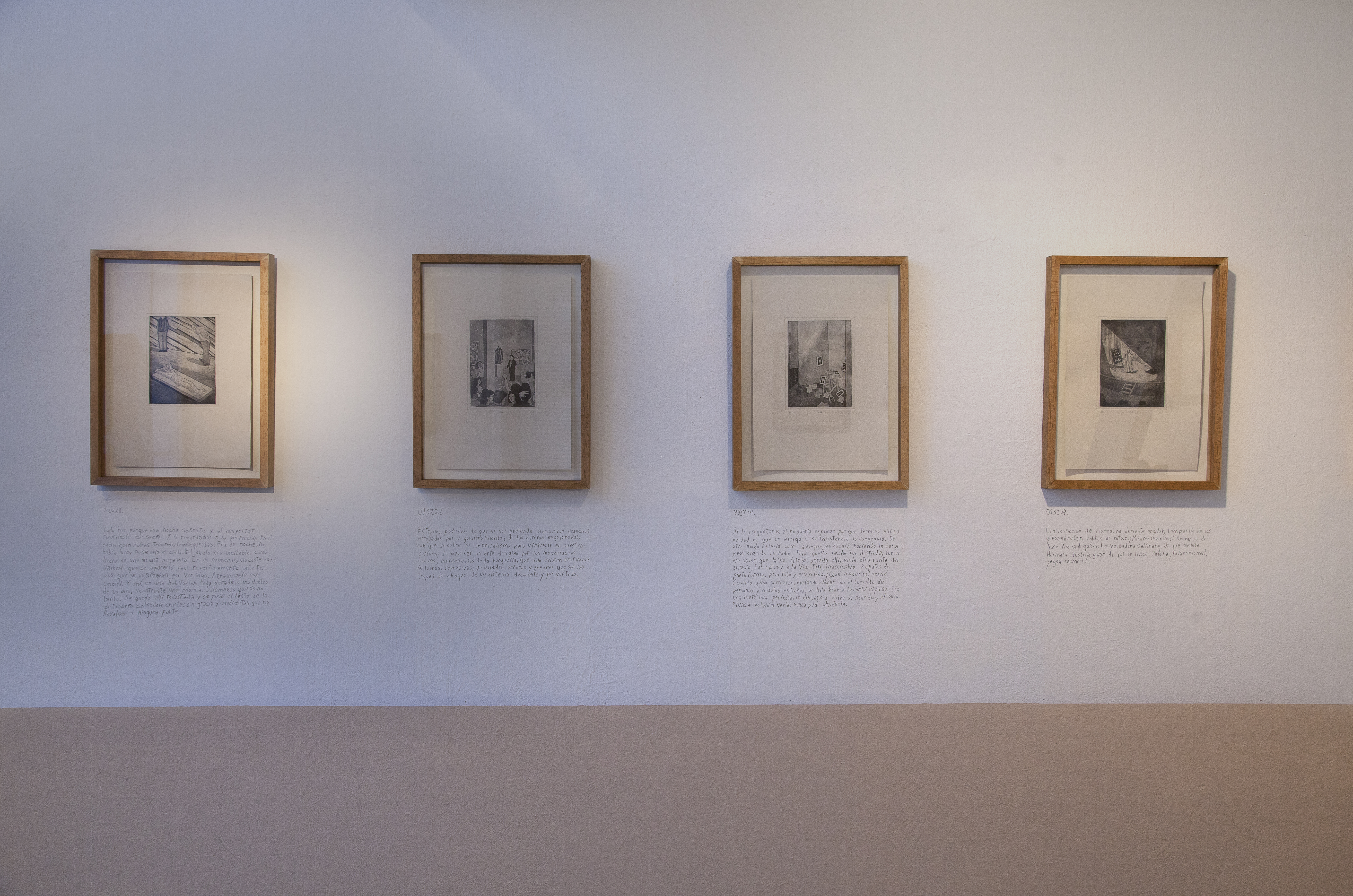



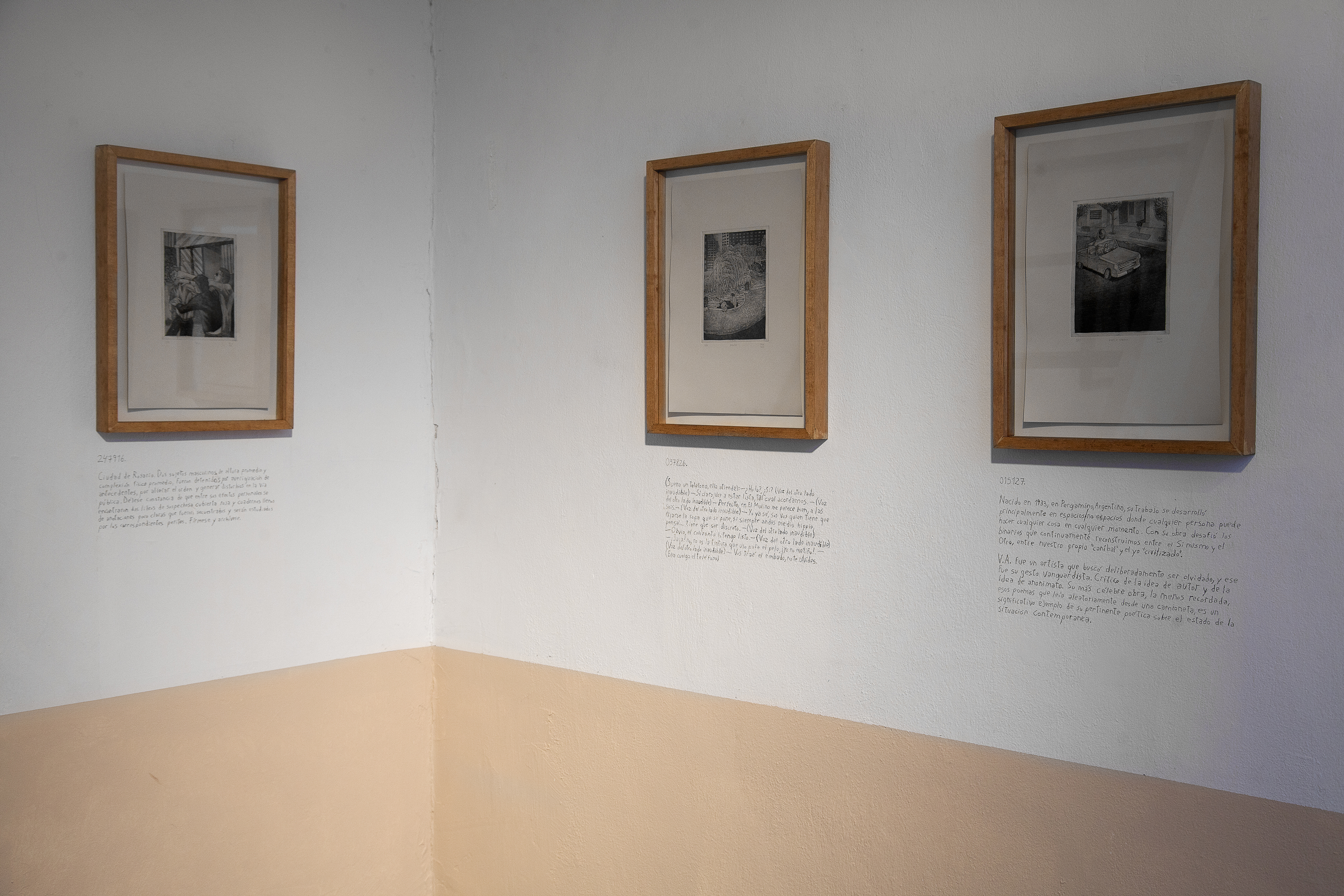

1 er premio | 1st prize, Consurso Itaú de Artes Visuales 2017/2018, BsAs, Arg, 2018
![]()
![]()
![]()
ANTES, un mundo sin reliquias, Bienal de Performance, BsAs, Arg, 2019![]()
![]()
![]()
![]()
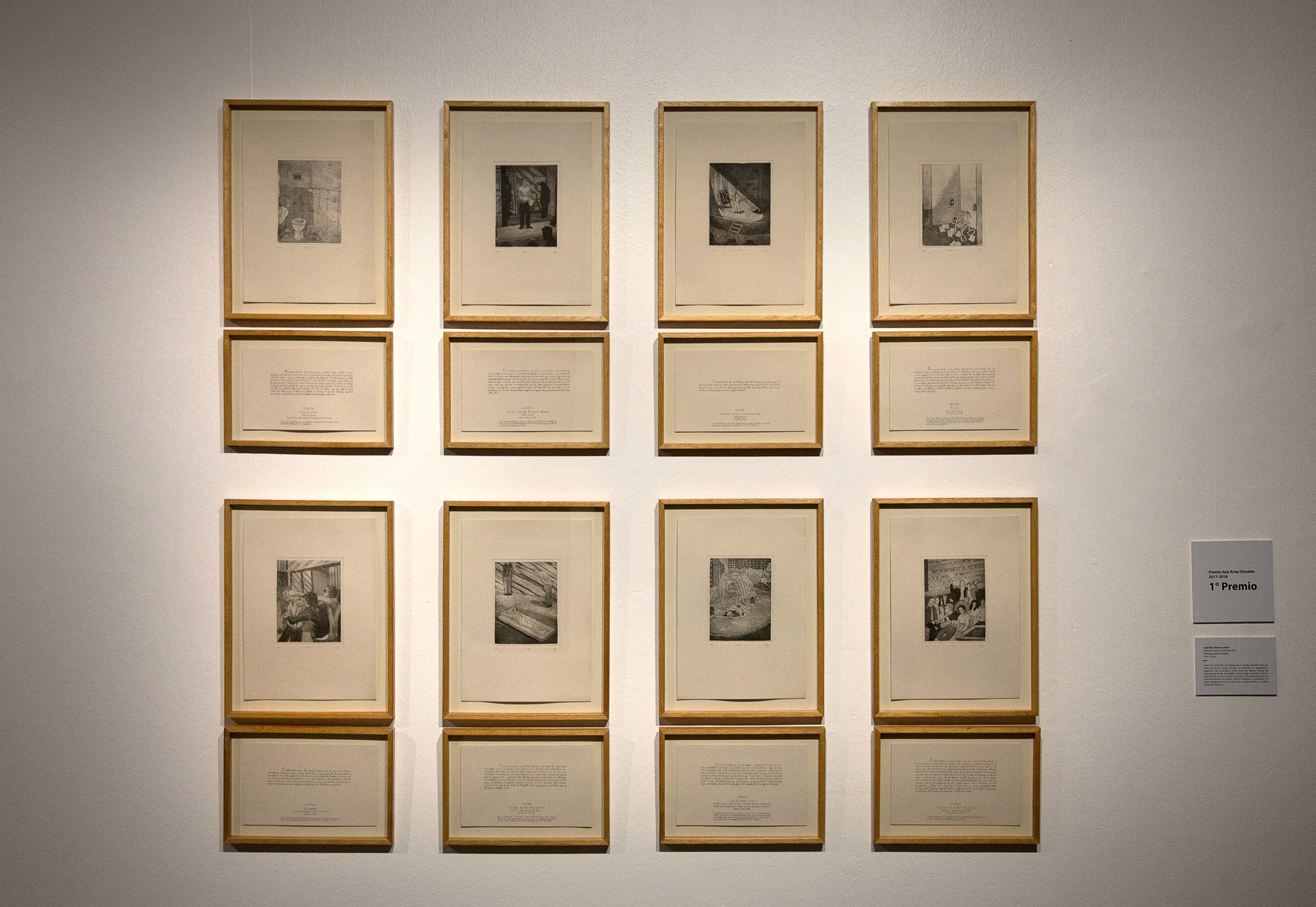
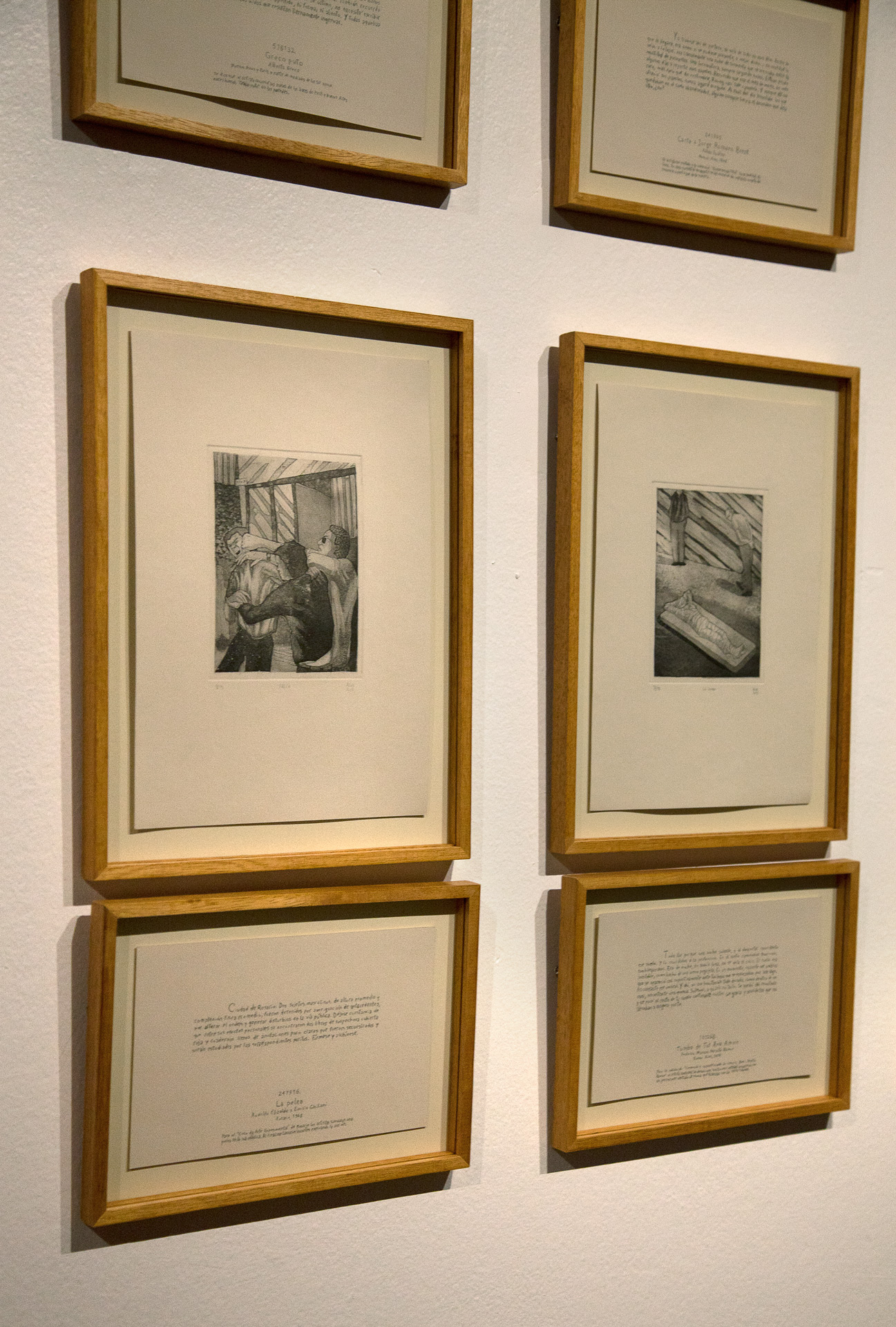
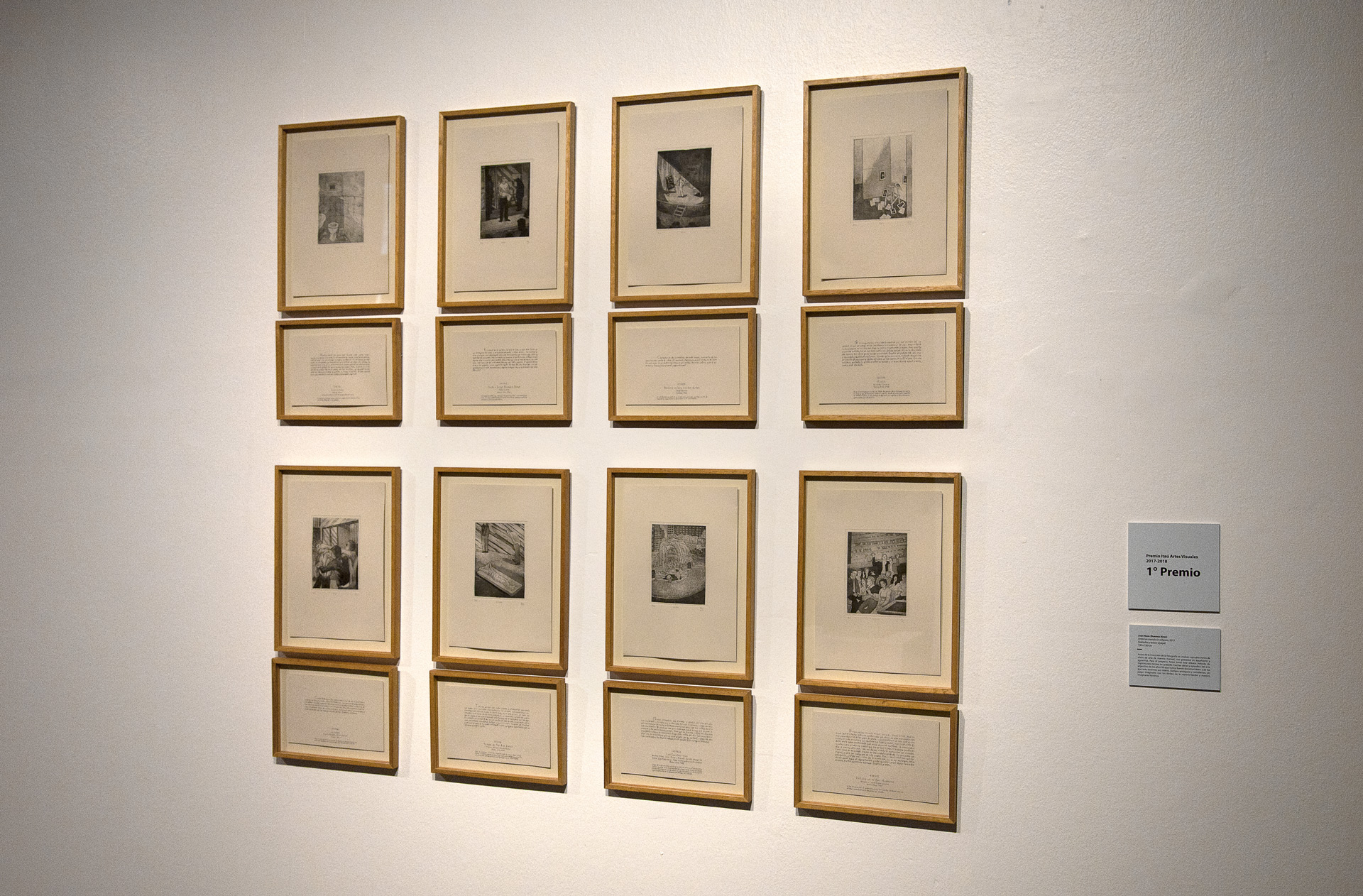
ANTES, un mundo sin reliquias, Bienal de Performance, BsAs, Arg, 2019




︎Entrevista a Juan Reos, Revista Hipermedula por motivo del Premio Itaú de Artes Visuales, 2018
︎Interview with Juan Reos, Hipermedula Magazine on the occasion of the Itaú Visual Arts Prize, 2018
︎Greco Puto, Milagros Rojas
ES | Nota sobre la muestra ANTES un mundo sin reliquias para la revista digital Jennifer, 2017
ENG | Review of the show ANTES un mundo sin reliquias para la revista digital Jennifer, 2017
︎Quise quedarme pero me fui, Andrez Aizicovich
ES | Extracto de nota, Flasherito Nr 16, Bs As, 2017
ENG | Quote of the Review, Flasherito Nr 16, Bs As, 2017
ES | Entrevista hecha por DataDeArte por motivo del 1 er premio, Consurso Itaú de Artes Visuales 2017/2018, BsAs, Arg.
ENG | Interview done by DataDeArte for the 1st prize, Consurso Itaú de Artes Visuales 2017/2018 , BsAs, Arg.
----------︎︎︎ otras obras / other works ︎︎︎----------
